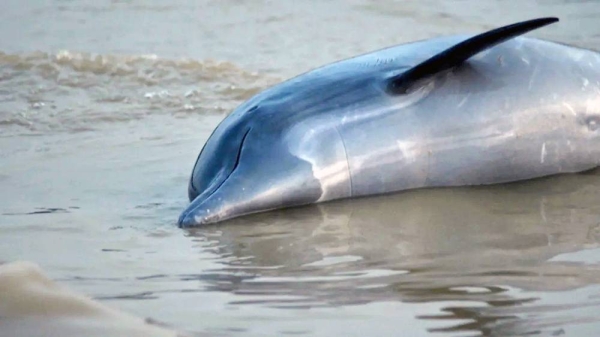In a tragic and alarming incident, over a hundred dolphins have been discovered dead in the heart of the Brazilian Amazon. This devastating occurrence comes at a time when the region is grappling with an unprecedented drought and record-breaking water temperatures that have soared to a staggering 102 degrees Fahrenheit.
These lifeless dolphins were all found within the confines of Lake Tefé over the course of the past week, as reported by the Mamirauá Institute, a prominent research facility that receives funding from the Brazilian Ministry of Science. The magnitude of this mass dolphin mortality event has raised eyebrows, leaving scientists to speculate whether the scorching lake temperatures and the historic drought in the Amazon may be to blame. This incident is yet another stark reminder of the pressing concerns climate scientists hold regarding the detrimental impact of human activities and extreme weather events on this ecologically significant region.
While it is still too early to definitively pinpoint the cause of this devastating event, experts are leaning towards a connection with the prolonged drought and the skyrocketing temperatures in Lake Tefé. Some areas of the lake have seen mercury levels climb to an astounding 39 degrees Celsius (102 degrees Fahrenheit), according to statements made by the Mamirauá Institute, as reported by CNN Brasil.
The Amazon River, often regarded as the world’s largest waterway, is currently experiencing its dry season. Unfortunately, this has led to an adverse impact on various species of river fauna, with many struggling to cope with the unusually high temperatures. In a race against time, dedicated researchers and activists are endeavoring to save the remaining dolphins. Their strategy involves relocating these creatures from lagoons and ponds in remote areas to the primary river body, where the water is comparatively cooler, as stated by CNN Brasil. However, this operation is not without its challenges due to the sheer remoteness of the region.
André Coelho, a researcher at the Mamirauá Institute, emphasized the need for caution, stating, “Transferring river dolphins to other rivers is not that safe because it’s important to verify if toxins or viruses are present [before releasing the animals into the wild].” This cautious approach is essential to ensure the well-being of the surviving dolphins.
The drought in the Amazon is wreaking havoc not only on the environment but also on the local economy. As many as 59 municipalities in the Amazonas State have reported water levels significantly below average, hampering transportation and fishing activities along the river. This dire situation is expected to worsen in the coming weeks, with authorities bracing themselves for even more severe droughts that could lead to additional dolphin fatalities, as reported by CNN Brasil.
In conclusion, the tragic death of over a hundred dolphins in the Brazilian Amazon is a somber reminder of the far-reaching consequences of climate change, drought, and extreme weather events. This event underscores the urgent need for both local and global efforts to mitigate the impact of environmental changes on our planet’s most vulnerable ecosystems.
